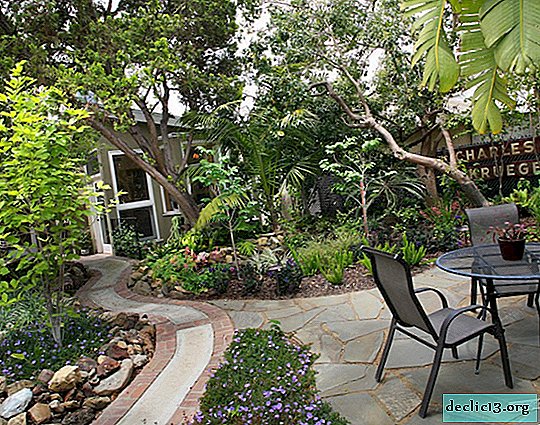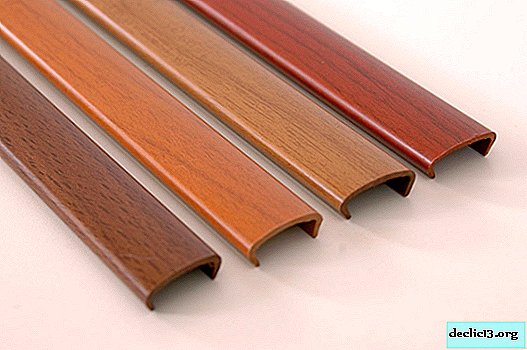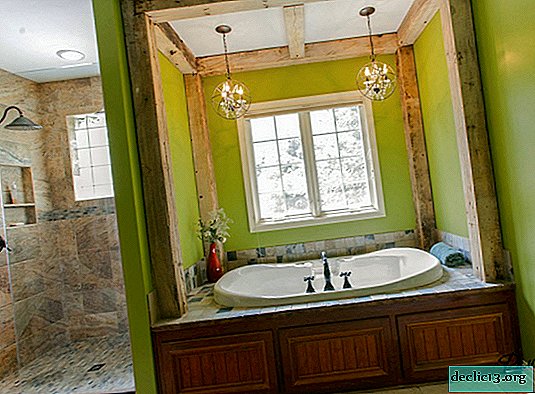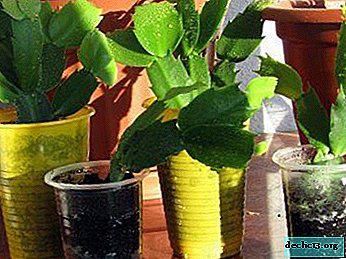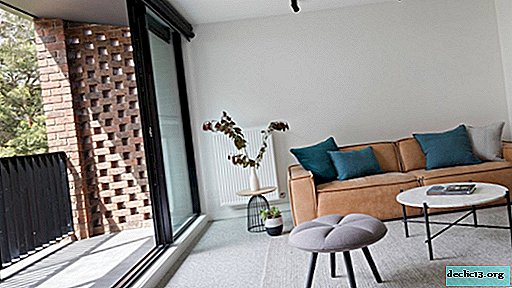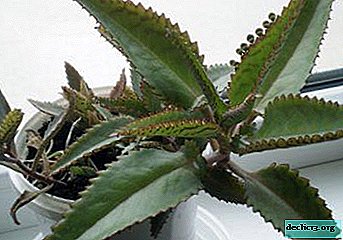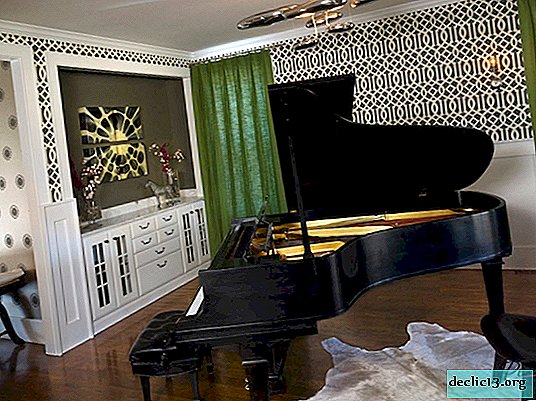Features of the rhododendron Polarnacht: how is it different from the rest of the species, what care does it require?
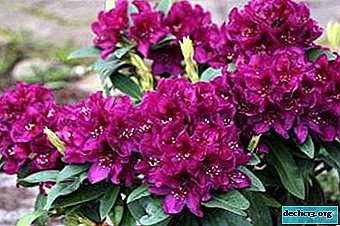
There are such a huge number of rhododendrons that it seems, well, everything is already, all types and varieties are open, described by biologists and successfully tested by gardeners in various conditions.
So no, this process cannot be stopped, thanks to breeders periodically new unusual varieties continue to appear.
They, of course, always cause the most active interest, because everything unusual attracts very much.
Brief definition
Rhododendron Polarnacht (Polarnacht) refers to the evergreen species of rhododendron, characterized by high winter hardiness. Flowering occurs in May - June, a long time. A plant is a true long-liver, it can grow in one place for 100 years.
Detailed description
This is a powerful tall shrub, reaches 2 meters in height and as much in width, grows very quickly, has the shape of a ball. The plant is very decorative due to the unusual color of its flowers juicy purple.
Type Description:
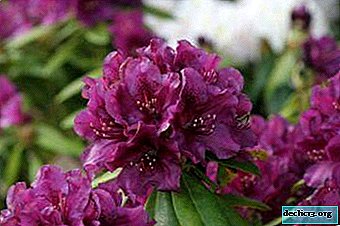 Leaves - leathery, shiny, very dense. Above they are dark green, below gray.
Leaves - leathery, shiny, very dense. Above they are dark green, below gray.- Flowers - Large, with corrugated petals (on the edge), saturated purple with contrasting light stamens, look very impressive. From a distance, they look almost black, and in bright light they appear crimson. Flowers are collected in large inflorescences - bouquets, each with at least 20 pieces.
- Trunk - the bark is smooth, with small scales. Young twigs first have a green color, and with age become gray and woody.
- Root system - superficial, very flattened.
History of occurrence
The hybrid variety "Polar Night" was bred in 1976 by German breeders due to the crossing of varieties: Turkana and Purple Splendour in Germany. They worked on creating a hybrid that can withstand severe frosts and at the same time defeat its beauty. Everyone really liked the result.
What is the difference from the rest of the species?
"Polar Night" stands out among other species with its juicy purple - violet flowers. No other species has such a color. In addition, the color feature (chameleon) only in this variety has a color change depending on the lighting.
Bloom
- When and how - there is a flowering process in late spring - early summer and lasts more than a month. It blooms very elegantly and spectacularly - a real huge blooming ball is formed from lush, plentiful inflorescences.
- Care before and after flowering - in the care before flowering, timely watering is very important, if there is not enough moisture for the bush, then the flowering will not be plentiful (or not at all). You also need to periodically (especially in hot weather) spray the shrub to create additional moisture. In early spring, it is necessary to feed the plant, after flowering it is also necessary to fertilize, but most importantly, all wilted flowers should be cut off (or cut off) so as not to weaken the bush.
- What to do if it does not bloom - There are several reasons why the shrub does not want to bloom: there is little moisture, there is no top dressing, the place of planting is not suitable. Most often, the reason lies precisely in the wrong place, you will have to transplant the plant, taking into account all the needs of your Rhododendron.
Use in design
This bush, definitely, will look anywhere just like a royal, because it is an elite copy. It will be wonderful to combine with spruce, ferns, mountain pine, as well as with other Rhododendrons, in which the color of the flowers is contrastingly different. It is very good to plant a bush near any garden pond, by the gazebo, by the bench, on the bend of the path, it will be good everywhere. A whole hedge looks very amazing from it.
Step-by-step care instructions
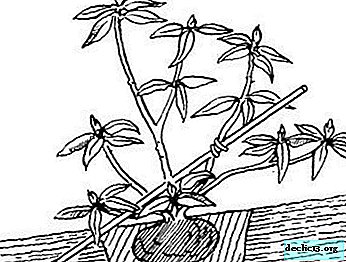 Choosing a landing place - you need to choose a place in the shade or partial shade, not in a lowland and not in the sun, better next to a pine tree (its shadow will serve as a protection for the bush. A very good place to plant: the north-eastern side of the house (if there are no drafts).
Choosing a landing place - you need to choose a place in the shade or partial shade, not in a lowland and not in the sun, better next to a pine tree (its shadow will serve as a protection for the bush. A very good place to plant: the north-eastern side of the house (if there are no drafts).- What should be the soil - the soil needs light, it must be loose, fertile, slightly acidic, moderately moist.
- Landing - Landing is usually carried out in the spring.
- First, we prepare a place for planting, carefully get rid of all weeds growing there, especially perennial ones.
- In the meantime, the seedling should be shed well with water so that the roots are nourished (it will be easier to take root).
- Then we dig a hole - 2 times more than the volume of the roots of the bush, pour drainage and a little substrate to the bottom of the hole. The substrate should contain: horse peat, leaf humus, sand, turf soil, chopped charcoal and a little pine bark.
- We place the seedling in a prepared place and gradually pour on the sides of the substrate. We don’t fall asleep the root neck, we form a trunk near the top and water it.
- As the water is absorbed, mulch with pine chips or needles.
- Temperature - for this variety, the lowest possible temperature is 28 degrees below zero, and the highest possible temperature is about 30 degrees below zero. The most favorable - ranging from minus 10 to plus 20 degrees.
- Watering - plentiful and regular, watering should not be superficial, but deep, that is, for a large bush requires at least 5 buckets of water. But the water must necessarily be soft, warm, rain (or pond) is best. You must also not allow excessive waterlogging, you can not do everything on the machine, you need to navigate by the state of the soil and the weather. If it rains, then, of course, watering is not required.
REFERENCE! It is also important for this flower to spray, which must be carried out on the leaves (not during flowering, water should not fall on the flowers). Water for spraying should also be necessarily soft.
- Top dressing - It is useful in certain periods: it is necessary in early spring, before the very beginning of flowering and even after flowering. Feeding in the form of water infusion on compost and rotten cow manure "works" well.
- Pruning - only a sanitary one is needed - after winter we carefully remove the broken branches, also after flowering it is advisable to remove all the flower stalks so that the seeds do not ripen later and the bush does not weaken.
 Transfer - it is worth replanting if the bush feels unsatisfactory, blooms very weakly or does not bloom at all, that is, the place does not fit it.
Transfer - it is worth replanting if the bush feels unsatisfactory, blooms very weakly or does not bloom at all, that is, the place does not fit it.- How to prepare for winter - in order to prepare the shrub well for wintering, it is necessary to water it well before negative temperatures, then lay the mulch with a thick layer. It can be coniferous needles or bark.
Although Polar Night is a fairly winter-hardy look, it’s better to cover it with any suitable covering material for the winter. This will save him not only from freezing (if suddenly there will be very severe frosts), but also from burning in bright sun in winter.
How to propagate?
This species propagates best by cuttings and layering:
- Cuttings are cut in the spring and root in loose soil under glass (in greenhouse conditions). Planted in open ground a year later next spring.
- Layering - in the spring you need to dig the lowest branch into the ground, slightly cut the bark and in this place fix the bracket (press it to the ground). To care for the whole season, not forgetting to water and spray, the next spring you need to separate and plant the seedling separately.
Diseases and Pests
For this species, diseases are characteristic:
- chlorosis;
- rust;
- various spotting;
- mosaic.
Also, sometimes buds can suddenly fly around and dry the leaves on the bush. As for pests, then on Rhododendron love to settle:
- scale insects;
- spider mite;
- rhododendral bug;
- aphid.
Prevention of various problems
To prevent various problems, you need to treat the bush with a solution of Bordeaux liquid and Hom in the early spring and after flowering. It is also important to periodically wash the bush from the hose - to arrange a “shower” for it, this is also good prevention from pests.
IMPORTANT! Do not overmoisten the soil under Rhododendron!Conclusion
What can be said in the end - there is no need to be afraid of anything new! You should definitely try to plant any plants in your garden if you like them (and allow natural conditions). The main thing is to organize the necessary care and then get satisfaction from the result. Beauties like Polarnacht should bring as much joy as possible and create a happy aura.

 Leaves - leathery, shiny, very dense. Above they are dark green, below gray.
Leaves - leathery, shiny, very dense. Above they are dark green, below gray. Choosing a landing place - you need to choose a place in the shade or partial shade, not in a lowland and not in the sun, better next to a pine tree (its shadow will serve as a protection for the bush. A very good place to plant: the north-eastern side of the house (if there are no drafts).
Choosing a landing place - you need to choose a place in the shade or partial shade, not in a lowland and not in the sun, better next to a pine tree (its shadow will serve as a protection for the bush. A very good place to plant: the north-eastern side of the house (if there are no drafts). Transfer - it is worth replanting if the bush feels unsatisfactory, blooms very weakly or does not bloom at all, that is, the place does not fit it.
Transfer - it is worth replanting if the bush feels unsatisfactory, blooms very weakly or does not bloom at all, that is, the place does not fit it.